Disclosure: This article contains affiliate links. We may earn a commission from purchases at no extra cost to you, which helps our travel content.
The first time I set foot in Phoenix, I was struck by how seamlessly the urban landscape melded with the surrounding Sonoran Desert. Having grown up between Florence's Renaissance splendor and Australia's untamed wilderness, I've developed a keen eye for places where human ingenuity and natural beauty dance together. Phoenix embodies this harmony in ways both surprising and delightful. As the winter sun bathes the city in golden light—a welcome respite from Darwin's tropical humidity—I find myself captivated by how this metropolis has embraced its desert identity rather than fighting against it. Join me for a weekend exploration where we'll discover how Phoenix rises like its mythological namesake, transforming from a harsh desert outpost into a vibrant urban oasis that celebrates rather than conquers its natural surroundings.
Desert Botanical Garden: Where Urban Meets Wild
My ranger instincts always draw me first to spaces where nature is celebrated, and the Desert Botanical Garden in Papago Park is Phoenix's crown jewel in this regard. Unlike traditional gardens that impose order on nature, this 140-acre sanctuary showcases the wild beauty of desert plants with minimal intervention.
Walking the winding paths at sunset, I'm reminded of similar conservation efforts in Australia's Red Centre, though here the saguaro cacti stand like sentinels instead of our ghost gums. The garden's five thematic trails offer different perspectives on desert life, but I recommend starting with the Plants & People of the Sonoran Desert Trail, which beautifully illustrates how indigenous cultures have sustainably coexisted with this seemingly harsh environment for centuries.
What struck me most was the Desert Wildflower Loop Trail, which in winter offers subtle blooms that most visitors overlook. As a forest ranger, I've learned that true natural beauty often reveals itself to the patient observer. Bring a good pair of compact binoculars to spot the abundant birdlife that calls this urban sanctuary home—I counted seventeen species in just one afternoon, including the striking Gila woodpecker making its home in saguaro trunks.
The garden transforms after dark during certain seasons with light installations that highlight the sculptural quality of desert plants. These evening exhibitions remind me of similar light festivals in Florence's historic gardens, though here the canvas is entirely different—spines and succulents rather than Renaissance sculptures.
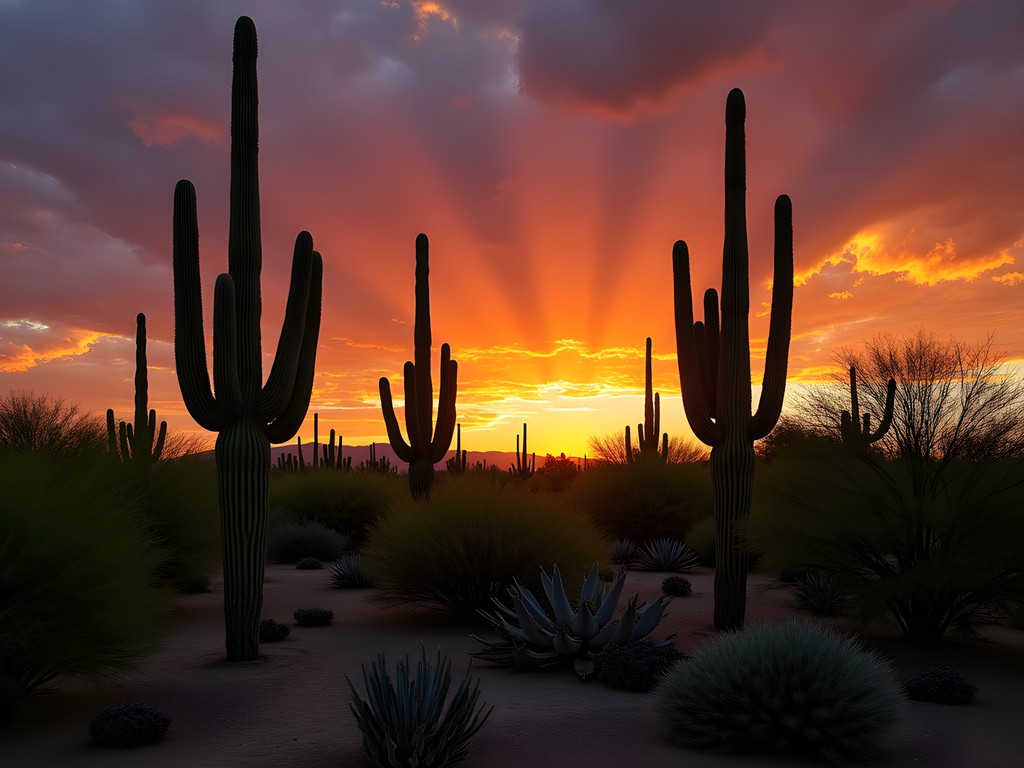
💡 Pro Tips
- Visit within the first two hours of opening to avoid crowds and catch the best light for photography
- Bring at least 1 liter of water per person even in winter—the desert air is deceptively dehydrating
- Download the garden's app before visiting for interactive plant identification
Urban Hiking: Phoenix's Mountain Preserves
One of Phoenix's most remarkable features is how wilderness areas penetrate deep into the urban fabric. Unlike many cities where nature retreats to the periphery, Phoenix embraces its mountain preserves as central elements of its identity. This reminds me of how Darwin's parks weave through the city, though the landscape couldn't be more different.
Camelback Mountain and Piestewa Peak offer the most iconic urban hikes, but my ranger's heart belongs to the less-traveled South Mountain Park and Preserve—the largest municipal park in the United States. At over 16,000 acres, it's nearly 20 times the size of Central Park, yet remains relatively unknown to visitors.
The Holbert Trail to Dobbins Lookout provides the perfect introduction to desert hiking for couples. The 3.8-mile round trip climbs gradually to a stone pavilion built by the Civilian Conservation Corps in the 1930s, offering panoramic views of the entire Phoenix metropolitan area. What fascinated me was seeing the clear boundary where urban development halts against the mountain preserves—a testament to conscious urban planning that respects natural boundaries.
For these desert hikes, proper preparation is essential. I always carry my trusty hydration backpack which holds enough water for a half-day adventure while keeping my hands free for scrambling over occasional rocky sections. The insulated drinking tube prevents water from heating up—a blessing even in winter when midday temperatures can still reach 20°C (70°F).
Before sunset, head to Dobbins Lookout to witness the city lights begin to twinkle across the valley floor. It's a moment that captures the essence of Phoenix—a human presence that complements rather than competes with the natural landscape.
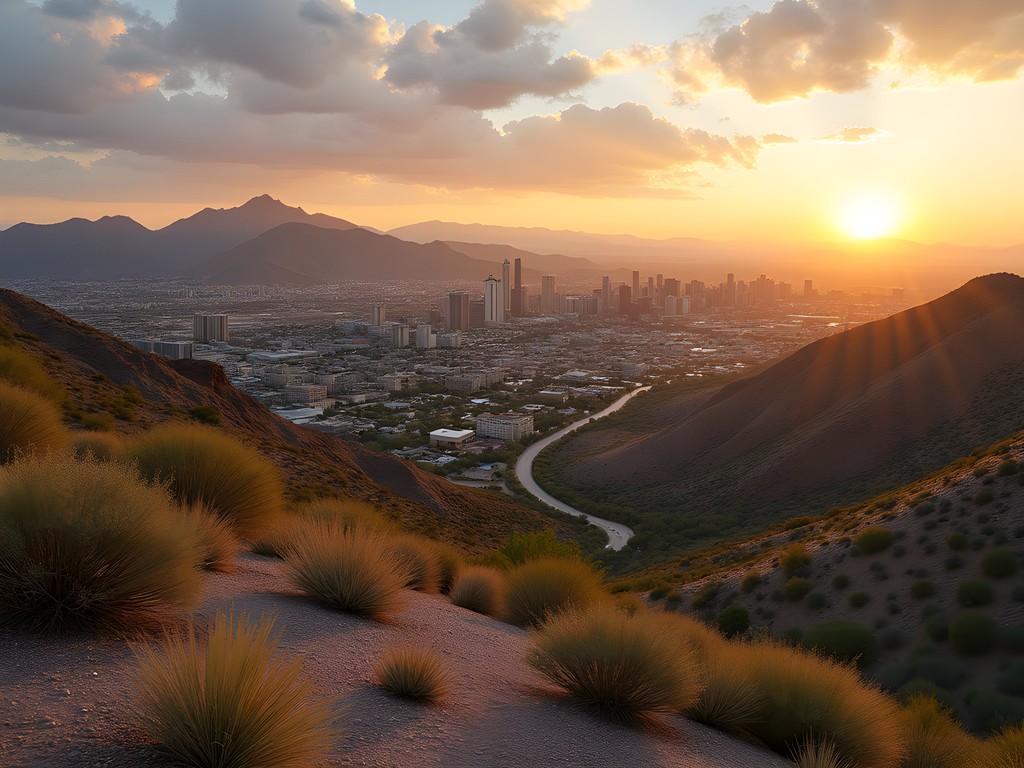
💡 Pro Tips
- Start hikes early in the morning to avoid heat and crowds
- Look for petroglyphs along the trails—ancient rock art from the Hohokam people who once inhabited this valley
- Pack a headlamp in case your hike runs longer than expected; desert sunsets are quick
Heritage Architecture: From Adobe to Art Deco
My mother's work as an art historian instilled in me a deep appreciation for how architecture tells the story of a place, and Phoenix offers a fascinating architectural narrative that spans centuries. While lacking Florence's Renaissance grandeur, Phoenix compensates with a unique architectural evolution that reflects its desert setting and cultural influences.
Begin your architectural exploration in Heritage Square, where the Rosson House Museum stands as a Victorian-era anomaly in this desert landscape. Built in 1895, this Queen Anne style home seems transported from another world, yet its wide porches and strategic window placement reveal adaptations to the desert climate long before air conditioning.
For a more authentic taste of regional architecture, the Pueblo Grande Museum and Archaeological Park preserves the remains of a Hohokam village that thrived here from 450 to 1450 CE. Their canal systems and adobe structures demonstrate sophisticated desert adaptation strategies that modern Phoenix could still learn from. The reconstructed buildings show how these ancient peoples created comfortable living spaces using only local materials and passive cooling techniques.
Moving into the 20th century, downtown Phoenix offers excellent examples of Art Deco and Mid-Century Modern design. The Luhrs Tower (1929) and Professional Building (1932) showcase how Art Deco style was adapted to southwestern sensibilities. For Mid-Century gems, the Phoenix Financial Center (1968) with its distinctive curved concrete parasol and the rotund Punch Taft Fountain (1969) are must-sees.
To truly appreciate these architectural treasures, I recommend picking up a copy of architecture guide which provides historical context and walking tours organized by era and style. This compact guide fits easily in a daypack and enriches your understanding of how Phoenix's built environment responds to both cultural influences and environmental constraints.

💡 Pro Tips
- Visit the Arizona Heritage Center for context on how architecture evolved with available materials and technologies
- Look for 'bankshot' photography opportunities where modern glass buildings reflect historic structures
- Explore early morning or late afternoon when slanting light accentuates architectural details
Roosevelt Row: Desert City's Creative Pulse
Every city has a neighborhood where its creative heart beats strongest, and in Phoenix, that pulse resonates through Roosevelt Row Arts District. As someone who has explored cultural districts from Melbourne's laneways to Florence's artisan quarters, I find 'RoRo' (as locals call it) refreshingly unpretentious yet vibrant with artistic energy.
What was once a neglected area of historic bungalows has transformed into Phoenix's most walkable arts district without losing its gritty authenticity. Unlike similar districts I've visited that quickly became gentrified and commercialized, Roosevelt Row maintains a delicate balance between revitalization and preservation of character.
Start your exploration at the intersection of Roosevelt and 5th Streets, where massive murals transform ordinary buildings into extraordinary canvases. The desert-inspired color palette—ochres, terracottas, and turquoise—reflects the surrounding landscape while the imagery often blends indigenous symbolism with contemporary themes. I spent hours photographing these ever-changing outdoor galleries with my mirrorless camera, which handles the strong contrast between bright murals and shadowed walkways beautifully.
First Friday art walks transform the neighborhood into a street festival with galleries opening their doors late into the evening. Even on regular weekends, the district buzzes with activity as couples browse the independent boutiques and studios. Stop at The Churchill, a community space built from repurposed shipping containers, where local vendors serve everything from craft cocktails to regional cuisine.
What struck me most was how this arts district, unlike many I've visited worldwide, embraces its desert setting rather than trying to create a generic 'international' aesthetic. Artists incorporate native materials, respond to the quality of desert light, and address themes of water conservation and desert ecology in their work. It's a refreshing approach that creates a sense of place you won't find anywhere else.

💡 Pro Tips
- Visit both during day and after dark for completely different experiences—many murals are subtly lit at night
- Look for guerrilla art installations in unexpected places like alleyways and rooftops
- Check local event listings for pop-up galleries and temporary exhibitions that don't appear in tourist guides
Culinary Oasis: Desert-to-Table Dining
My dual heritage—Italian mother, Australian father—has blessed me with an appreciation for how food connects us to place. Phoenix's culinary scene reflects its position at the crossroads of cultures: Native American, Hispanic, Anglo-Western, and increasingly, global influences converge here in fascinating ways.
What excites me most is the emerging desert-to-table movement, where innovative chefs incorporate native ingredients that indigenous peoples have harvested for millennia. At Kai Restaurant (the only AAA Five Diamond and Forbes Five Star restaurant in Arizona), Chef Ryan Swanson creates masterpieces using tribal farming ingredients from the Gila River Indian Community. The mesquite-smoked bison with cholla buds and tepary beans connects diners to the desert in ways no imported cuisine could.
For a more accessible but equally authentic experience, visit the Phoenix Public Market Café, where seasonal ingredients from the adjacent farmers market appear in creative southwestern dishes. Their prickly pear lemonade—simultaneously tart, sweet, and slightly earthy—captures the essence of the Sonoran Desert in a glass.
Couples seeking a romantic dinner should reserve a sunset table at Different Pointe of View, perched atop North Mountain. The panoramic views of the city lights emerging as dusk falls create an unforgettable backdrop for Mediterranean-inspired cuisine with southwestern touches.
Wine enthusiasts might be surprised to learn that Arizona has a burgeoning wine industry, with vineyards in the higher elevations producing impressive varietals. Many Phoenix restaurants proudly feature local wines, but for the best selection, visit Postino WineCafé in the historic Arcadia Post Office building, where knowledgeable staff can guide you through regional options.
To bring home a taste of the Sonoran Desert, I recommend picking up a southwestern cookbook that features accessible recipes using ingredients you can find in specialty markets or online. The desert's flavors—mesquite, chiltepín peppers, prickly pear—create distinctive profiles unlike anything in European or Asian cuisines.

💡 Pro Tips
- Ask servers about locally-sourced ingredients—many restaurants have direct relationships with specific farms and producers
- Try at least one dish featuring nopales (prickly pear cactus pads), a versatile ingredient in southwestern cuisine
- Reserve dinner tables for 30 minutes before sunset to enjoy both daylight and nighttime views if dining at elevated restaurants
Final Thoughts
As my weekend in Phoenix draws to a close, I find myself reflecting on how this city has redefined my understanding of urban exploration. Unlike ancient cities I've visited across Southeast Asia or Mediterranean coastal towns where history stretches back millennia, Phoenix offers something different—a laboratory for the future relationship between cities and their natural environments. This desert metropolis demonstrates that urban development and environmental stewardship need not be opposing forces. From its mountain preserves that pierce the city center to restaurants celebrating native ingredients, Phoenix embraces rather than erases its desert identity. For couples seeking a winter escape that balances urban comforts with natural wonders, few destinations offer such seamless integration of both worlds. As you plan your own Phoenix adventure, remember that the most rewarding experiences come when you approach this unique city not as an escape from the desert, but as a gateway to understanding it more deeply.
✨ Key Takeaways
- Phoenix excels at integrating urban development with natural desert landscapes
- Winter offers perfect weather for exploring both outdoor preserves and urban districts
- The city's architecture and cuisine tell the story of adaptation to desert environments
- Cultural experiences are most rewarding when they connect to the Sonoran Desert's unique character
📋 Practical Information
Best Time to Visit
November through March, with December-February offering the mildest temperatures
Budget Estimate
$150-250 per day for a couple (accommodations, meals, and activities)
Recommended Duration
2-3 days for urban exploration, add 1-2 more to include nearby natural attractions
Difficulty Level
Easy



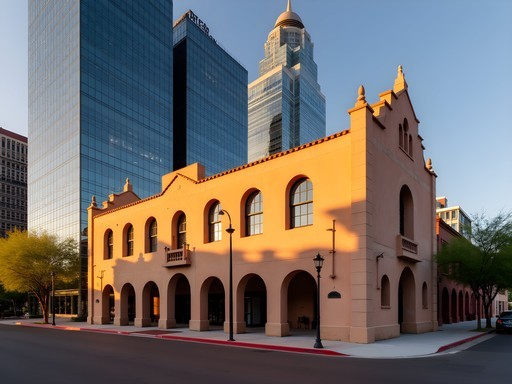

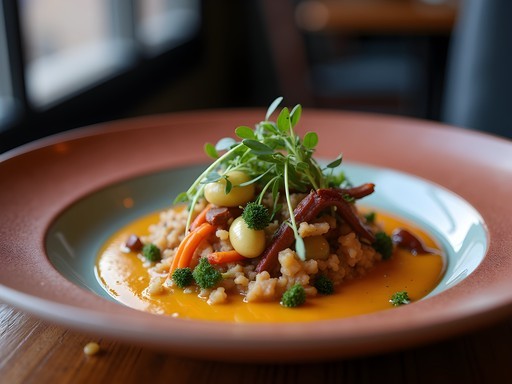



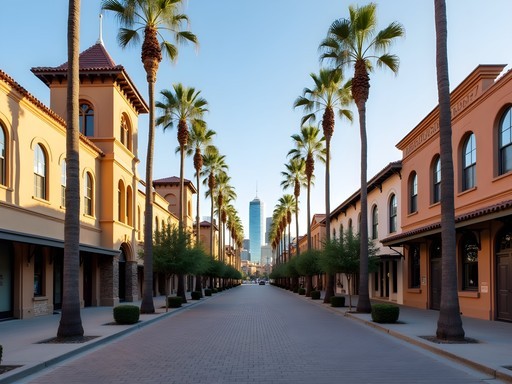






Comments
cooltime
Just got back from Phoenix and followed your urban hiking suggestions - Camelback Mountain was challenging but worth every drop of sweat! Pro tip for anyone going: start SUPER early (like sunrise) and bring twice as much water as you think you need. I used my hydration pack and it was a lifesaver. The Desert Botanical Garden was gorgeous too, but Roosevelt Row was the highlight - such cool street art! Maya, your blog nailed the vibe of the city. Thanks for the inspiration!
Hunter Thompson
Brilliant write-up on Phoenix! I backpacked through Arizona last year and completely agree about Roosevelt Row - such an unexpected gem! The murals are incredible and I spent an entire day just wandering and taking photos. The coffee shops there are top-notch too. If anyone's heading there, don't miss the First Friday art walks - the whole area comes alive with street performers and pop-up galleries. I stayed at a hostel nearby and met some cool local artists who showed me some hidden spots not in the guidebooks. Phoenix definitely surprised me - it's way more than just a desert stopover!
starone
Any specific coffee shops you'd recommend in Roosevelt Row? I'm a huge coffee snob!
Hunter Thompson
Definitely try Lux Central! Amazing atmosphere and their cold brew saved me in that heat. Also, Jobot Coffee has great vibes and food too.
starone
Great post! How hot was it when you visited? Planning a trip in September and wondering if I'll melt lol
cooltime
Not Maya but I went last September. Still pretty hot during the day (90s) but evenings are perfect. Just bring a good water bottle and start early for hikes!
vacationgal
Wow Maya, your photos of the Desert Botanical Garden are amazing! Adding Phoenix to my bucket list now!
Hunter Thompson
The night tours at the Botanical Garden are even better! They light up the cacti and it's magical when it's not so hot.
vacationgal
Ooh that sounds amazing! Do they run year-round?
summerguide
If anyone's heading to Phoenix, don't miss the Sonoran hot dogs at Nogales Hot Dogs stand. Best street food in the city!
moonperson
Beautiful photos! What camera did you use for those night shots of Roosevelt Row?
Maya Coleman
Thanks! Just my trusty iPhone 14 Pro with night mode. The lighting in Roosevelt Row is so vibrant it makes photography easy!
wavewanderer
Love how you captured Phoenix's unique energy! I've always just thought of it as a stopover city but you've convinced me to actually spend some time exploring next trip. Those art deco buildings look amazing!
skyguy
YES to everything about Roosevelt Row! I was there for a conference and skipped the official dinner to explore that neighborhood instead. Best decision ever! Found this amazing little mezcal bar with live jazz and ended up talking to locals all night. Phoenix has such a cool vibe that most tourists miss if they stick to the resorts. Also, that sunrise hike recommendation is golden - watching the city wake up from Camelback Mountain was unforgettable.
Frank Garcia
Maya's analysis of Phoenix as a city of contrasts is spot on. I backpacked through the Southwest last year on a tight budget and found Phoenix surprisingly accessible. The light rail system connects most major attractions, and I stayed at a hostel near Roosevelt Row for just $30/night. For those interested in the architectural heritage Maya mentioned, I'd recommend the free walking tour that starts at Heritage Square - it covers everything from Victorian mansions to mid-century modern gems. The Heard Museum's collection of Native American art provides important context to understand the region's complex cultural history. One budget tip: many museums have free admission days, usually on the first Friday or Sunday of the month.
Savannah Torres
Maya, your perspective on Phoenix as a blend of urban and desert landscapes is spot on! We took our family there last winter and it was such a refreshing break from Philadelphia's cold. The kids absolutely loved the Desert Botanical Garden's butterfly pavilion, and we spent hours at the Children's Museum downtown. One thing I'd add for families visiting Roosevelt Row - many of those art galleries have free kid-friendly activities on First Fridays! We stumbled upon a clay sculpting workshop that kept our 8 and 10 year olds engaged while we chatted with local artists. Also, the light rail was surprisingly convenient for getting around with kids in tow. Thanks for highlighting Phoenix's unique charm!
Venture X
Premium card with 2X miles, $300 travel credit, Priority Pass